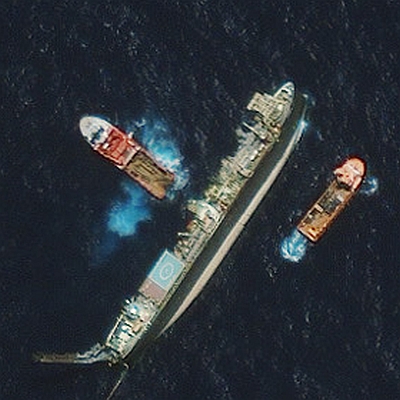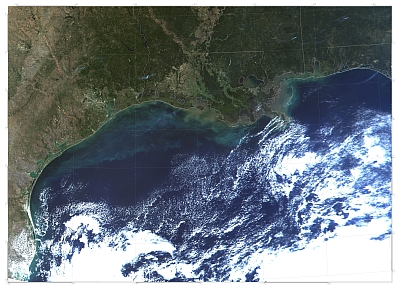1. Introduction
Welcome to the Tutorial 'Marine Pollution'
The marine environment is adversely affected by pollutants, particularly in coastal zones, where the impact of polluted water on humans, animals and plants is felt most strongly. Whilst laboratory analysis is needed to identify many of the pollutants, remote sensing from aircraft and sattelites can be used to detect and monitor oil and chemical spills, toxic algae and thermal pollution.
Response measures following tanker accidents at sea
can be aided by remote sensing
Oil is toxic to fish and water species. Prolonged exposure affects reproduction, growth and feeding of aquatic life, even at low concentrations. A penny-size drop of oil can kill a bird!
But: there are many other forms of marine pollution, it's not just all about oil. Accidents of big vessels may also cause chemicals to be spillt or cargo to be lost at sea. Marine pollution can also be caused far away inland by dumping toxic substances into rivers. As all rivers end up in the sea eventually, so do all the substances that are taken on by the water.
Changes in the marine environment may cause algae to grow and spread. These changes can be related to the water quality, temperature, nutrients, sunlight, or other factors. Some of these algae maybe harmful to the marine biota by depleting oxygen and/or releasing toxins.
Hunting killer algae from space
Red Tide is a phenomenon caused by algal blooms along coastal areas. These blooms generally discolour the waters but, unlike their name suggests, they may have all kinds of colours. The spread of algal blooms can be detected using remote sensing techniques.
In this tutorial we invite you to learn...
- where marine pollution comes from,
- about the effects that pollutants have on the environment,
- how remote sensing can help to detect marine pollution,
- which methods can be used to detect different pollutants,
- how to interpret satellite and airborne images in terms of pollutants, and
- what can be done to prevent marine pollution


